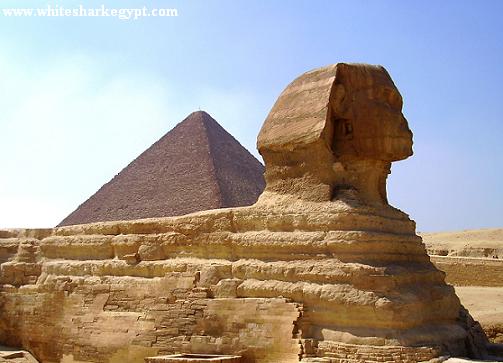Ramadan
Ramadan is the ninth month of the lunar Islamic calendar, which lasts 29 or 30 days according to the visual sightings of the crescent moon according to numerous biographical accounts compiled in hadiths. The word Ramadan comes from the Arab
ic root “ramida” or
“ar-ramad,” which means scorching heat or dryness. It is the Muslim
month of fasting, in which Muslims refrain from dawn until sunset from
eating, drinking, and sexual relations.
In Islam, the rewards of fasting are many, but in this month, they are believed to be multiplied. Muslims fast in this month and offer more prayers and Quran recitations.
In Islam, the rewards of fasting are many, but in this month, they are believed to be multiplied. Muslims fast in this month and offer more prayers and Quran recitations.
Beginning of Ramadan
Hilāl (the crescent)
is typically a day (or more) after the astronomical new moon. Since the new
moon indicates the beginning of the new month, Muslims can usually safely
estimate the beginning of Ramadan. However, to many Muslims, this is not in
accordance with authenticated Hadiths stating that visual confirmation per
region is recommended. The consistent variations of a day have existed since
the time of Muhammad.
Iftar
At sunset,
families hasten for the fast-breaking meal known as Iftar. Considering the high
diversity of the global muslim population, it is impossible to describe typical
suhur or iftar meals. Suhur can be dinner, or iftar, leftovers, typical breakfast
foods, or ethnic foods. Social gatherings, many times buffet style, at iftar
are frequent, and traditional dishes are often highlighted. A few dates and a
cup of water are usually the first foods to break the fast, while fried
pastries, salads, nuts, legumes, and breads are common. Traditional desserts
are often unavoidable, especially those made only during Ramadan. Water is
usually the beverage of choice, but juice and milk are also consumed. Soft
drinks and caffeinated beverages are consumed to a lesser extent.
For many around
the world, iftar starts with the eating of one or more (usually three) dates – as Muhammad used to do. Following that,
Muslims adjourn for the Maghrib prayer, the fourth of the five daily prayers,
after which the main meal is served.
Increased prayer and recitation of the Quran
In
addition to fasting, Muslims are encouraged to read the entire Quran. Some
Muslims perform the recitation of the entire Quran by means of special prayers,
called Tarawih.
These voluntary prayers are held in the mosques every night of the month,
during which a whole section of the Quran (Juz', which is
1/30 of the Quran) is recited. Therefore, the entire Quran would be completed
at the end of the month. Although, it is not required to read the whole Quran
in the Salatul
Tarawih prayers, it is common.
Laylat al-Qadr
Sometimes
referred to as "the night of power" or 'the night of decree", Laylat
al-Qadr is considered the most holy night of the year. This is the
night in which Muslims believe the first revelation of the Quran was sent down
to Muhammad stating that this night was "better than one thousand months
[of proper worship], as stated in Chapter 97:3 of the Qu'ran.
Also,
generally, Laylat al-Qadr is believed to have occurred on an odd-numbered night
during the last 10 days of Ramadan, i.e., either the night of the 21st, 23rd,
25th, 27th or 29th.
Decorations
Various
cultural additions are mistakenly associated as part of the original
celebrations arising from the time of Muhammad, as many of the forms of
celebration in various cultures and countries have added. For example, no
symbols of Ramadan were evident in any scholarly literature of Muhammad's
lifetime, yet in some places Ramadan is met with various decorations.
For
example, in some Muslim countries today lights are strung up in public squares,
and across city streets, to add to the festivities of the month. Lanterns
have become symbolic decorations welcoming the month of Ramadan. In a growing
number of countries, they are hung on city streets. The tradition of lanterns
as a decoration becoming associated with Ramadan is believed to have originated
during the Fatimid Caliphate primarily centered in Egypt, where the Caliph
Al-Muizz Lideenillah was greeted by people holding lanterns to celebrate his
ruling. From that time lanterns were used to light mosques and houses
throughout the capital city of Cairo. Shopping malls, places of business, and people's homes
can be seen with stars and crescents, as well as, various lighting effects.
Some Muslim parents, residing in Western countries mimic modern Christmas
celebration traditions, as a means of trying to make Ramadan a more enjoyable
time for their children who are too young to fast and understand the spiritual
significance of the holy month.
Eid ul-Fitr –
End of Ramadan
The
Muslim holiday of Eid ul-Fitr ("festivity of breaking the fast"),
sometimes spelled in English as Eid al-Fitr, marks the end of Ramadan and the
beginning of the next lunar month called Shawwal in Arabic. This first day of
the following month is declared after another crescent new moon
has been sighted or the completion of 30 days of fasting if no visual sighting
is possible due to weather conditions. This first day of Shawwal is called Eid
ul-Fitr. Eid Ul-Fitr may also be a reference towards the festive nature of
having endured the month of fasting successfully and returning to the more
natural disposition (fitra) of being able to eat, drink and resume intimacy
with spouses during the day.










Comments
Post a Comment